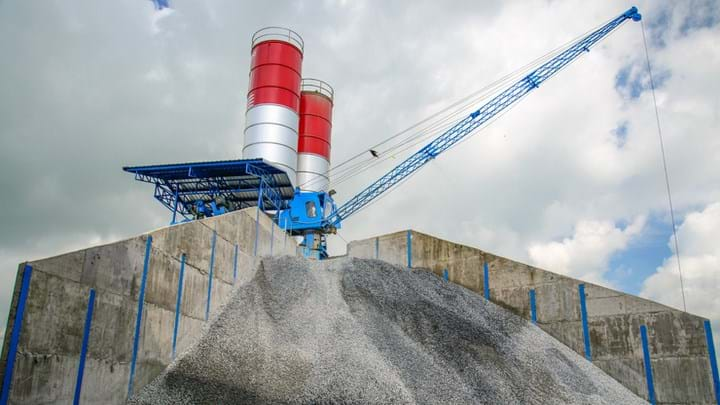Report outlines path to significantly reducing emissions from cement industry

A REPORT has outlined how the cement and concrete industry can reduce its CO2 emissions by 95% by 2050.
The report, A sustainable future for the European cement and concrete industry, was commissioned by the European Climate Foundation and conducted by the Swiss Federal Institute of Technology (ETHZ), Zürich, and the Swiss Federal Institute of Technology (EPFL), Lausanne.
Cement production is responsible for 8% of global CO2 emissions. More than 60% of emissions in cement production comes from the chemical breakdown of the limestone used to produce the clinker, which is one of the major components in cement. Most efforts to date have been focussed on reducing the CO2 footprint of the cement, but the key finding of the report is that efforts to reduce CO2 need to be carried out across the entire value chain.
Reducing emissions across all stages
The report identifies four areas across the value chain where emissions can be reduced – clinker production, cement production, concrete production, and at the construction level. It identifies proven technologies that can be implemented quickly across the chain.
Clinker produces around 875 kgCO2eq/t clinker, and 40% of this comes from the energy required to heat limestone. However using greener fuels for energy can reduce the emissions. Improved kiln technologies can reduce the emissions, as using dry kilns instead of wet kilns is more energy efficient. Alternative binders can also be used instead of conventional clinker, although some of these have limited applications and technical difficulties.
Ordinary Portland cement contains 95% clinker, but European standards allow the clinker level to be between 5% and 95% for different cement types. Reducing the amount of clinker in cement by substituting some of the clinker with other products can reduce emissions. For example, by-products from other industries such as blast furnace slag from the steel industry or natural products like limestone can be used. However, the report notes that variations in clinker content can influence the applications of the cement.
There is often 20% more cement in concrete than what is required by the standard, so reducing the amount of cement used in concrete will lower emissions. It is also possible to reduce the amount of concrete used at the structural level without compromising safety.
Emissions reduction efforts also need to be connected across the value chain. For example, increasing the use of blended concretes (ie substituting some of the clinker) requires R&D by cement plants, but the cement needs to be bought by concrete companies, and preferred by construction companies.
Including carbon capture and storage
The report outlines a scenario which makes changes across the full value chain with only moderate investment, and can reduce CO2 emissions by 75% by 2050 compared to 1990 levels. Including CCS with this scenario would increase this to a 95% CO2 reduction. The report recommends that CCS should be pursued with the objective of meeting post-2050 climate targets, but there are technical issues to be solved if it is to be implemented on a large scale within the next two decades. The main limitation with CCS is the extreme cost, as the investment cost is twice as high as for a new cement plan and the power consumption would need to be increased drastically. The report says that net zero emissions would be technically feasible, but only with extreme investments.
Recent Editions
Catch up on the latest news, views and jobs from The Chemical Engineer. Below are the four latest issues. View a wider selection of the archive from within the Magazine section of this site.




